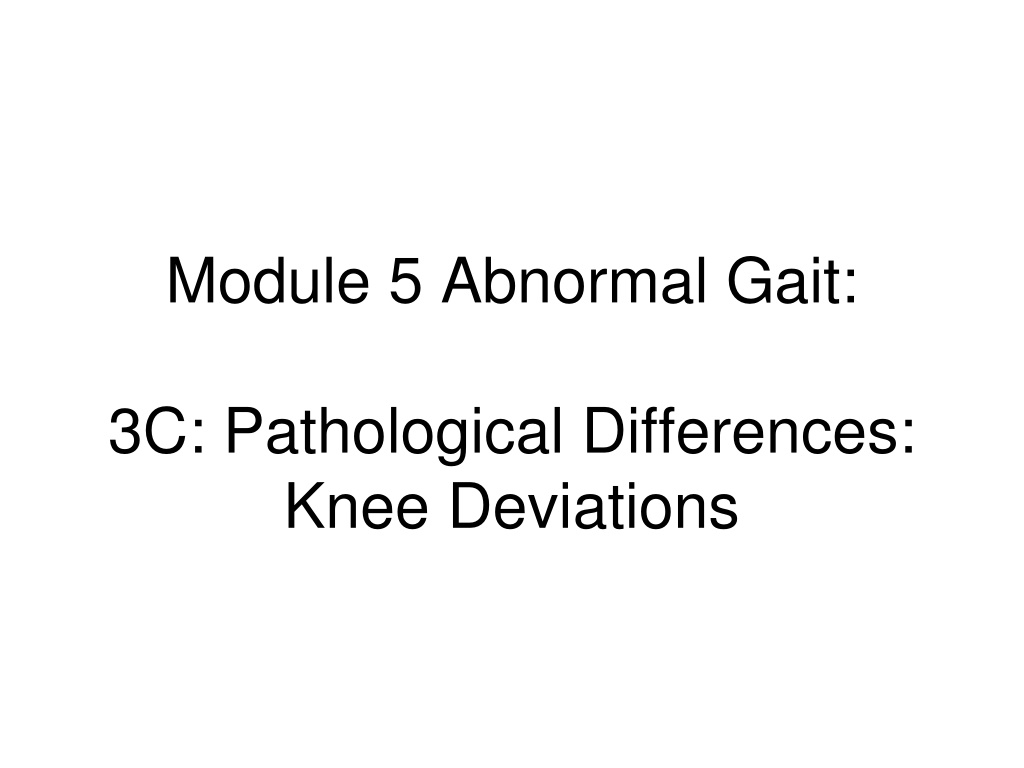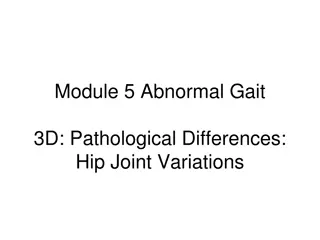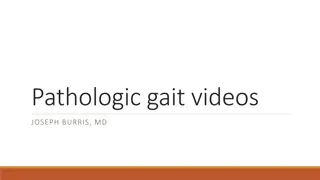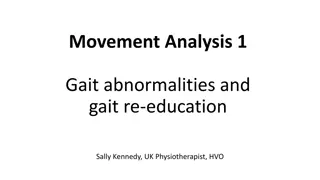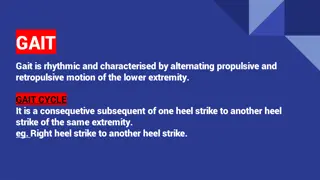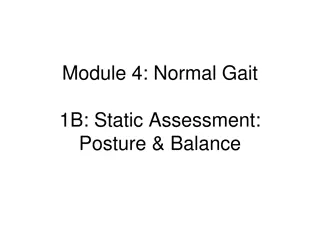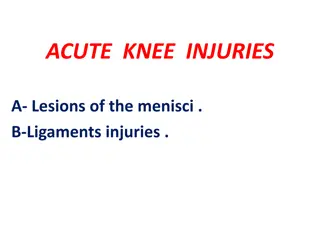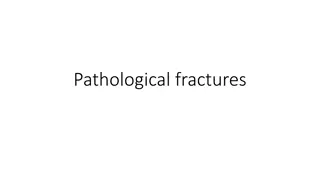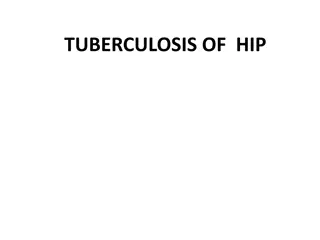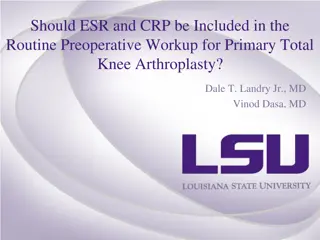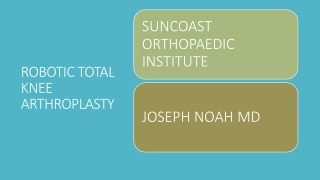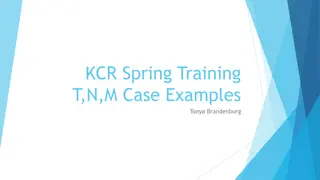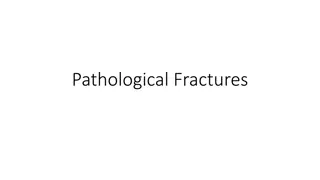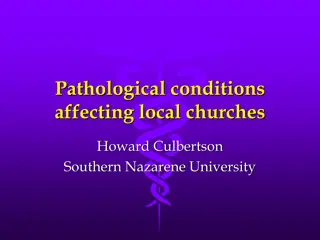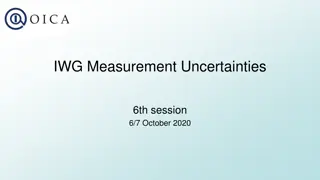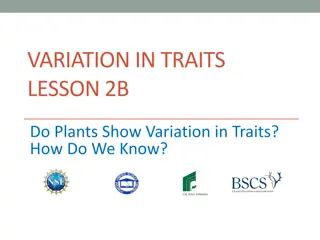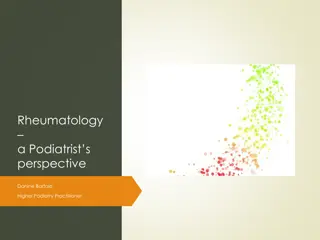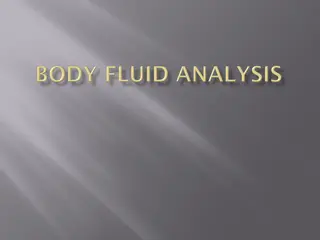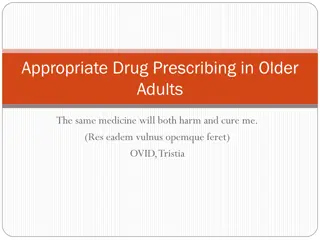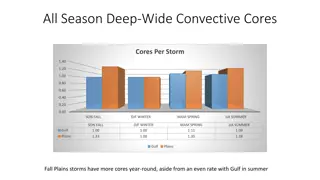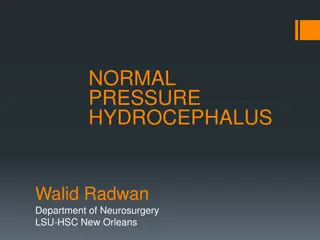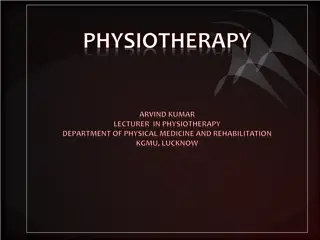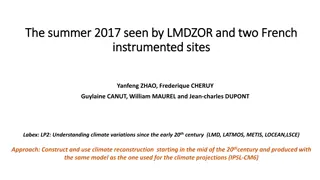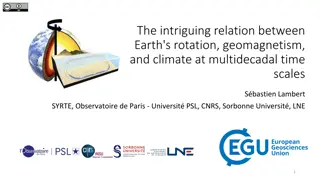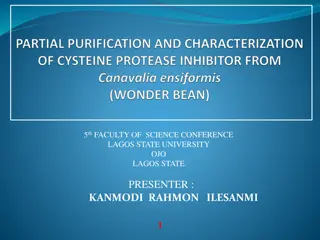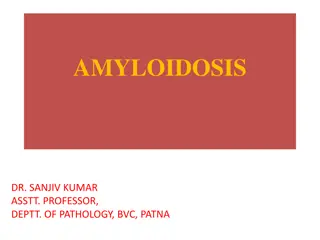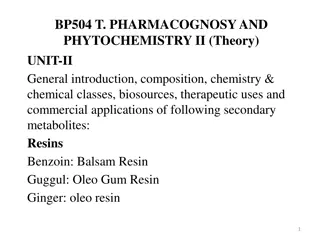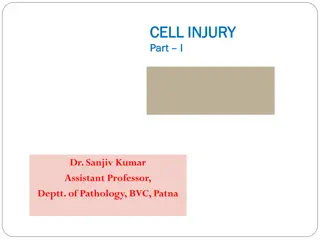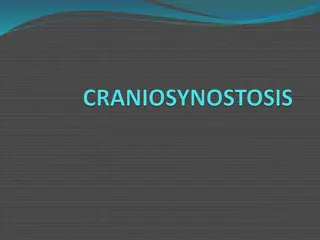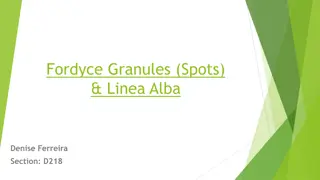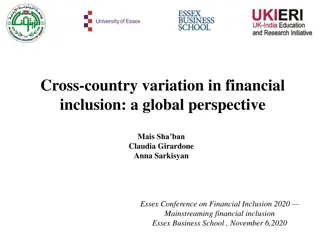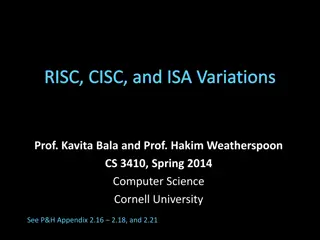Understanding Pathological Knee Variations in Gait Analysis
Explore different knee deviations in gait analysis, such as limited knee flexion, knee hyperextension, extensor thrust, and excess knee flexion. Learn how these deviations disrupt normal gait patterns, impact muscle demands, and affect shock absorption during various phases of the gait cycle.
Download Presentation

Please find below an Image/Link to download the presentation.
The content on the website is provided AS IS for your information and personal use only. It may not be sold, licensed, or shared on other websites without obtaining consent from the author. Download presentation by click this link. If you encounter any issues during the download, it is possible that the publisher has removed the file from their server.
E N D
Presentation Transcript
Module 5 Abnormal Gait: 3C: Pathological Differences: Knee Deviations
References Perry, J and Burnfield, J. (2010). Gait Analysis: Normal and Pathological Function 2ndedition. Ch 12. Hsu, JD; Michael, JW and Fisk, JR. (2008) Atlas of Orthoses and Assistive Devices, 4thedition. Ch 5, pgs 74 to 75.
Agenda - Pathological Gait: Knee Variations 1. Sagittal Plane Deviations A. Limited Knee Flexion B. Knee Hyperextension C. Extensor Thrust D. Excess Knee Flexion E. Excess Contralateral Knee Flexion F. Wobble 2. Coronal Plane Deviations A. Excessive Abduction (Valgus) B. Excessive Adduction (Varus)
Knee Variations: Sagittal Plane A. Limited Knee Flexion Disrupts: LR, Pre Swing and Initial Swing During LR, reduces shock absorption and increases demand of quadriceps During Swing, effectively lengthens limb Pathologies leading to lack of flexion in stance or swing differ markedly Possible Gait Deviations: Caused by:
Knee Variations: Sagittal Plane Hyperextension B. Knee Hyperextension Disrupts: Stance Reduces demand on weakened quads It IS a position of knee stability During WA: decreases shock absorption During Mid Stance, Terminal Stance and Pre Swing: limits forward progression Caused by:
B. Knee Hyperextension, continued What s likely cause of Left? Quad weakness (LR)? Combined quad and PF weakness (SLS)? Quad and PF spasticity? Severe PF contracture? Justify.
Knee Variations: Sagittal Plane Extensor Thrust C. Extensor Thrust Disrupts: LR and Mid Stance Reduces demand on weakened quads During WA: decreases shock absorption and interferes with forward progression Ensures knee extended at Mid Stance Often accompanied by forward trunk lean How does this differ from hyperextension then? Explain.
Knee Variations: Sagittal Plane Excess Knee Flexion D. Excess Knee Flexion Disrupts: two different scenarios; each with very differing pathologies (1) exaggeration of normal flexion arc (LR and Mid Swing) greater than 15 (2) Loss of normal extension (Mid Stance, Terminal Stance and Terminal Swing) to fully extend knee During LR: places more demand on quads During Mid Stance: compromises weight bearing stability During Terminal Swing: results in shortened step length Numerous causes: Some due to knee structures themselves; others due to adjacent joint dysfunction
D. Excess Knee Flexion - First, observe left limb When is excess knee flexion? - Only coronal view - Choose a limb - When is excess flexion? -
D. Excess Knee Flexion, Pathological Mechanism What could be a possible Pathological Mechanism? Why?
Knee Variations: Sagittal Plane Knee Flexion E. Excess Contralateral Knee Flexion Disrupts: Contralateral Stance Phase Effectively makes reference limb longer during swing Thereby may increase likelihood of increased hip flexion or circumduction for clearance Commonly caused by leg length discrepancy
Knee Variations: Sagittal Plane Wobble F. Wobble Disrupts: LR, Mid Stance and Terminal Stance Commonly due to impairments in proprioception OR presence of clonus Decreases forward progression, increases energy cost and decreases limb stability
Knee Variations: Coronal Plane A. Excessive Abduction (Valgus) Disrupts: Stance Severe, may limit stability, necessitate proximal and/or distal compensations and contribute to pain Pseudo-valgus = combined internal hip rotation, knee flexion and quite often severely pronated feet
Knee Variations: Coronal Plane, continued B. Excessive Adduction (Varus) Disrupts: Stance Severe, may limit stability, necessitate proximal and/or distal compensations and contribute to pain
Normal Knee Joint- Sagittal Plane - Stance and Swing Phases
Pedorthic Program of Study This workforce product was funded by a grant awarded by the U.S. Department of Labor s Employment and Training Administration. The product was created by the grantee and does not necessarily reflect the official position of the U.S. Department of Labor. The U.S. Department of Labor makes no guarantees, warranties, or assurances of any kind, express or implied, with respect to such information, including any information on linked sites and including, but not limited to, accuracy of the information or its completeness, timeliness, usefulness, adequacy, continued availability, or ownership. Produced 2016. HOPE Careers Consortium is a partnership of five institutions of higher education that is building exciting new programs that will provide valuable career education and training in the Orthotics, Prosthetics, and Pedorthics (O&P) sector. The five institutions are: Baker College Flint, Michigan; Century College White Bear Lake, Minnesota; Oklahoma State University Institute of Technology Okmulgee, Oklahoma; Spokane Falls Community College Spokane, Washington; and St. Petersburg College St. Petersburg, Florida. Although the authoring institution of this educational resource has made every effort to ensure that the information presented is correct, the institution assumes no liability to any party for any loss, damage, or disruption caused by errors or omissions. Except where otherwise noted, this work by St. Petersburg College is licensed under the Creative Commons Attribution 4.0 International License. To view a copy of this license, click on the following link: Creative Commons Licenses 4.0.
